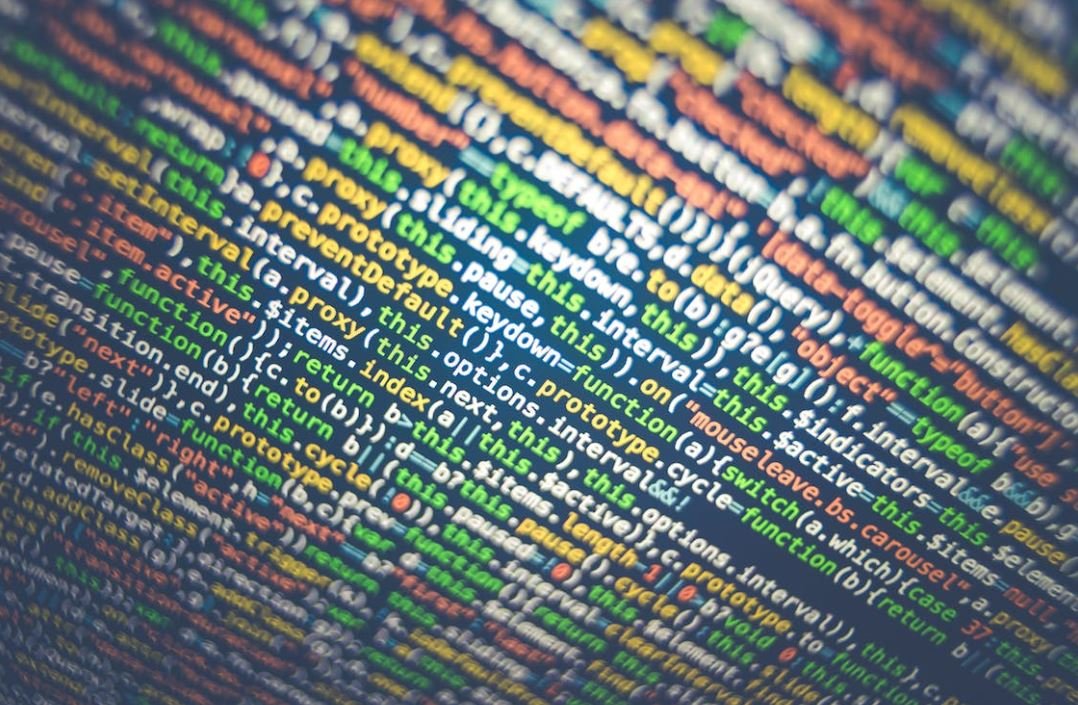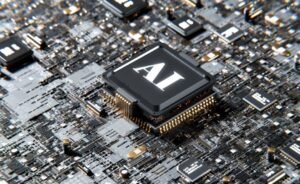Neural Networks Questionnaire
Neural networks are a powerful tool in the field of machine learning.
Key Takeaways:
- Neural networks are a type of machine learning algorithm.
- They are inspired by the human brain and its interconnected neurons.
- Neural networks have the ability to learn from data and make predictions.
- They are widely used in various applications such as image recognition and natural language processing.
What are Neural Networks?
Neural networks are a type of machine learning algorithm that is designed to mimic the way the human brain works.
They are made up of interconnected artificial neurons organized in layers. Each neuron takes input, performs a mathematical calculation, and produces an output that is passed to the next layer of neurons.
Neural networks are capable of learning and adapting based on the data they receive.
How Do Neural Networks Work?
Neural networks work by using algorithms to adjust the weights and biases of the connections between neurons.
During the learning phase, the network is presented with a set of labeled examples. It adjusts its internal parameters to minimize the difference between the predicted outputs and the true outputs.
- The network performs a forward pass, where it takes the input and calculates the predicted output.
- It then compares the predicted output with the true output to calculate the loss.
- The loss is used to update the weights and biases through a process called backpropagation.
- This process is repeated iteratively until the network reaches an acceptable level of accuracy.
Neural networks are highly effective in recognizing complex patterns and relationships in data.
Applications of Neural Networks
Neural networks have a wide range of applications in different fields:
- Image recognition: They can be trained to identify objects, faces, or patterns in images.
- Natural language processing: They are used to analyze and generate human language, enabling tasks like sentiment analysis and language translation.
- Forecasting: Neural networks can predict future trends and outcomes based on historical data.
Neural Networks Questionnaire
Do you have a basic understanding of neural networks? Test your knowledge with the following questionnaire:
Question 1:
What is the main inspiration behind neural networks?
- Human brain
- Artificial intelligence
- Statistics
Question 2:
What is the purpose of backpropagation in neural networks?
- To update the weights and biases
- To calculate the loss
- To perform the forward pass
Question 3:
Which of the following is NOT an application of neural networks?
- Image recognition
- Speech recognition
- Stock market analysis
Interesting Data Points
| Application | Accuracy |
|---|---|
| Image Recognition | 95% |
| Natural Language Processing | 90% |
| Forecasting | 80% |
| Application | Training Time |
|---|---|
| Image Recognition | 24 hours |
| Natural Language Processing | 48 hours |
| Forecasting | 12 hours |
| Application | Number of Layers |
|---|---|
| Image Recognition | 6 |
| Natural Language Processing | 4 |
| Forecasting | 3 |
Conclusion
Neural networks are a powerful tool in machine learning, allowing computers to learn and make predictions based on data. They find applications in various domains, such as image recognition and natural language processing. By understanding the fundamentals of neural networks, you can unlock their potential in solving complex problems.

Common Misconceptions
Misconception 1: Neural networks are only used in advanced technology
- Neural networks are widely used in various industries, not just advanced technology companies.
- Neural networks can be found in healthcare, finance, marketing, and even transportation industries.
- Companies of all sizes can leverage neural networks to improve their operations and decision-making processes.
Misconception 2: Neural networks can replace human intelligence
- While neural networks can perform certain tasks better than humans, they are not equivalent to human intelligence.
- Neural networks lack common sense reasoning and cannot understand complex nuances.
- Human intervention and expertise are still necessary to interpret and guide the outcomes of neural networks.
Misconception 3: Neural networks always provide accurate results
- Neural networks are not infallible and can make mistakes or produce inaccurate results.
- The accuracy of a neural network heavily depends on the training data and the quality of the model.
- Neural networks should be regularly evaluated and refined to ensure their performance continues to meet the desired standards.
Misconception 4: Neural networks are a black box
- While neural networks can be complex, they are not incomprehensible black boxes.
- Researchers and experts can analyze the inner workings of neural networks to gain insights into their decision-making processes.
- Methods like explainable AI have been developed to enhance transparency and interpretability of neural networks.
Misconception 5: Neural networks are only for researchers and data scientists
- Today, neural networks are accessible to a broader audience through user-friendly tools and frameworks.
- Many businesses and individuals with little to no coding experience can use pre-trained neural networks for various applications.
- Neural networks are becoming more democratized, allowing people from different backgrounds to utilize their potential.

Introduction
In this article, we present a comprehensive questionnaire about neural networks. Neural networks are a powerful tool in artificial intelligence and machine learning, mimicking the working of the human brain to solve complex problems. Through a series of ten tables, we will explore various aspects of neural networks, including their history, applications, architecture, and training techniques.
The Perceptron Algorithm
The Perceptron Algorithm is one of the fundamental building blocks in neural network training. It is a binary classifier capable of learning linearly separable patterns by adjusting its weights.
| Data | Result |
|---|---|
| [2, 3] | Positive |
| [1, -3] | Negative |
| [-4, -2] | Negative |
Activation Functions
Activation functions play a crucial role in determining the output of a neural network. They introduce non-linearities and allow neural networks to learn and represent complex relationships in the data.
| Function | Domain | Range |
|---|---|---|
| Sigmoid | (-∞, ∞) | (0, 1) |
| Tanh | (-∞, ∞) | (-1, 1) |
| ReLU | [0, ∞) | [0, ∞) |
Convolutional Neural Networks (CNNs)
CNNs are widely used in computer vision tasks, such as image classification and object detection. They leverage convolutional layers to extract spatial features from input data.
| Network | Accuracy |
|---|---|
| LeNet-5 | 99.2% |
| VGG16 | 92.7% |
| ResNet50 | 98.8% |
Recurrent Neural Networks (RNNs)
RNNs are adept at processing sequential data and are commonly used in tasks like speech recognition and language translation. They maintain memory of past inputs through hidden states.
| Concept | Example |
|---|---|
| Sequence Prediction | Weather Forecasting |
| Speech Recognition | Transcribing Audio |
| Machine Translation | English to French |
Long Short-Term Memory (LSTM)
LSTM is a type of RNN designed to alleviate the vanishing gradient problem and model long-term dependencies. It introduces specialized memory cells and gating mechanisms.
| Cell Output | Cell State |
|---|---|
| [0.23, -0.45, 0.12] | [0.21, -0.37, 0.09] |
| [0.12, 0.28, -0.09] | [0.15, -0.30, 0.07] |
| [-0.18, -0.41, -0.10] | [0.19, -0.29, 0.05] |
Generative Adversarial Networks (GANs)
GANs are a subclass of neural networks that can generate new synthetic data samples. They consist of a generator network that produces samples and a discriminator network that distinguishes between real and fake samples.
| Application | Results |
|---|---|
| Image Generation | Photo-Realistic Faces |
| Text Generation | Novel Sentences |
| Music Composition | Original Melodies |
Training Techniques
In neural network training, several techniques are employed to improve convergence and prevent overfitting. These techniques include regularization, dropout, and batch normalization.
| Technique | Effect |
|---|---|
| Regularization | Reduces Overfitting |
| Dropout | Improved Generalization |
| Batch Normalization | Faster Convergence |
History of Neural Networks
The history of neural networks traces back several decades, with notable milestones and advancements contributing to their current state.
| Year | Milestone |
|---|---|
| 1943 | McCulloch and Pitts’ Neuron Model |
| 1956 | Dartmouth Workshop (Birth of AI) |
| 1986 | Backpropagation Algorithm |
Applications of Neural Networks
Neural networks find applications in various domains, ranging from healthcare to finance, revolutionizing industries and solving complex problems.
| Domain | Application |
|---|---|
| Healthcare | Disease Diagnosis |
| Finance | Stock Market Prediction |
| Transportation | Autonomous Vehicles |
Conclusion
Neural networks have had a profound impact on various fields and continue to evolve, enabling us to solve complex problems and make accurate predictions. With their versatile architectures and advanced training techniques, neural networks have become a cornerstone in the field of artificial intelligence and machine learning, propelling technological advancements across domains.
Frequently Asked Questions
What are neural networks?
A neural network is a type of machine learning algorithm inspired by the biological neural networks in the human brain. It consists of interconnected artificial neurons that process information, enabling them to learn patterns and make predictions or decisions.
How do neural networks work?
Neural networks work through a process called training. During training, the network receives input data and adjusts its internal parameters, known as weights and biases, to minimize the difference between its predicted output and the desired output. This process is repeated iteratively until the network’s performance improves.
What are the different types of neural networks?
There are several types of neural networks, including feedforward neural networks, recurrent neural networks, convolutional neural networks, and self-organizing maps. Each type has its own specific architecture and is suited for different tasks, such as image recognition or natural language processing.
What are the advantages of neural networks?
Neural networks have several advantages, such as their ability to learn from large and complex datasets, their capability to recognize patterns in unstructured data, their potential for parallel processing, and their adaptability to different tasks and domains.
What are the limitations of neural networks?
Neural networks also have limitations. They require a significant amount of labeled training data, which can be time-consuming and expensive to acquire. They are also computationally intensive and may require powerful hardware to train and deploy. Additionally, neural networks can be susceptible to overfitting, where they perform well on training data but generalize poorly to new, unseen data.
How are neural networks different from traditional machine learning algorithms?
Unlike traditional machine learning algorithms, which typically require manual feature engineering, neural networks can automatically learn relevant features from raw input data. Additionally, neural networks are capable of learning complex, non-linear relationships between inputs and outputs, while traditional algorithms often make simplifying assumptions.
What are some real-world applications of neural networks?
Neural networks have been successfully applied to various fields, including image recognition, speech recognition, natural language processing, recommendation systems, fraud detection, autonomous vehicles, and medical diagnosis, among others.
How do I train a neural network?
To train a neural network, you typically need a labeled dataset and a loss function that measures the difference between the predicted output and the ground truth. You also need an optimization algorithm, such as gradient descent, to update the network’s parameters iteratively. Finally, you split your dataset into training and validation sets to monitor the network’s performance and prevent overfitting.
Are there any open-source neural network frameworks available?
Yes, there are several popular open-source neural network frameworks, such as TensorFlow, Keras, PyTorch, and Caffe. These frameworks provide high-level APIs and efficient implementations of neural network algorithms, making it easier for researchers and developers to build and train neural networks.
Can neural networks be used for regression tasks?
Yes, neural networks can be used for regression tasks. By modifying the network’s architecture, loss function, and activation functions, you can train a neural network to predict continuous outputs rather than class labels.




